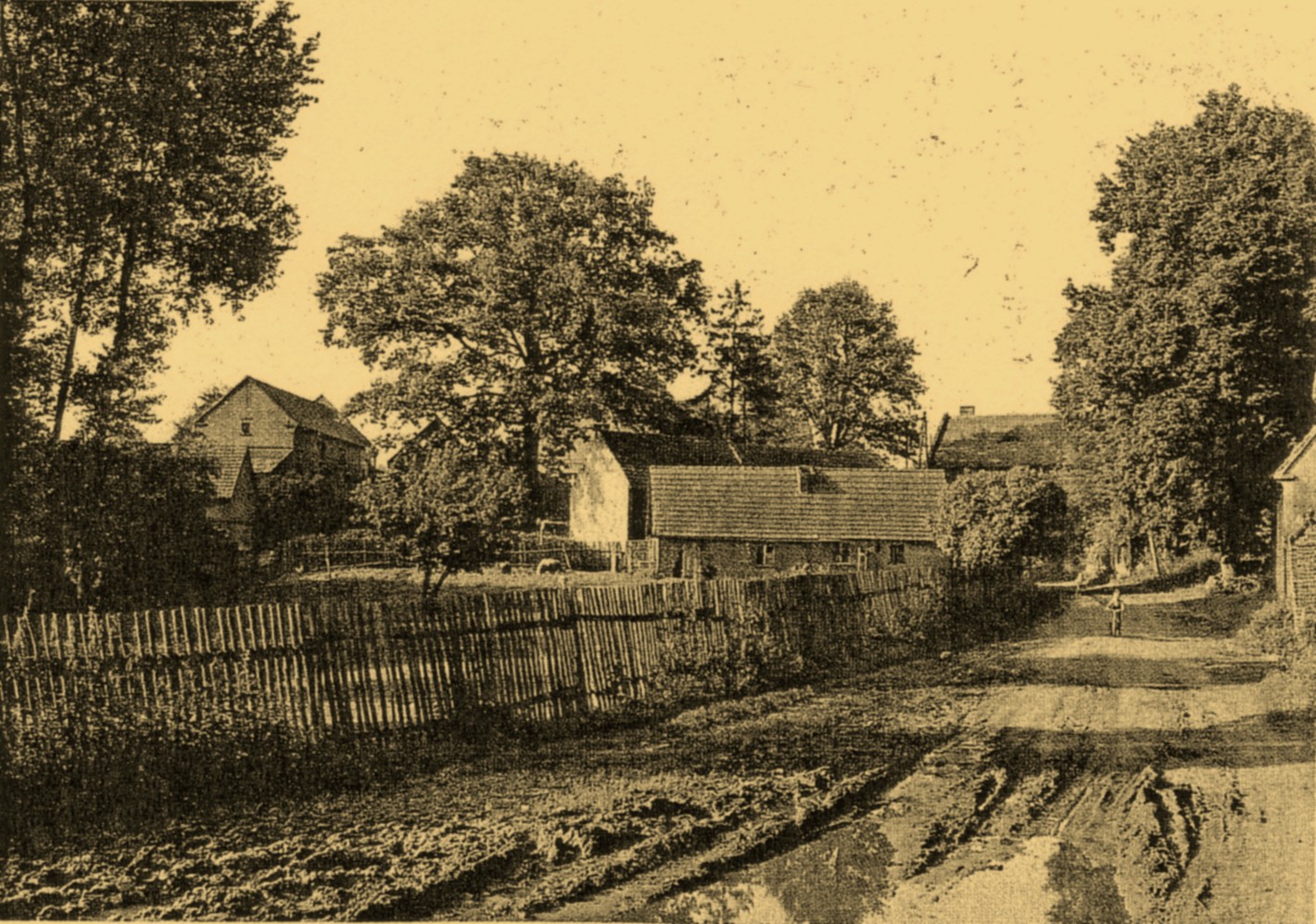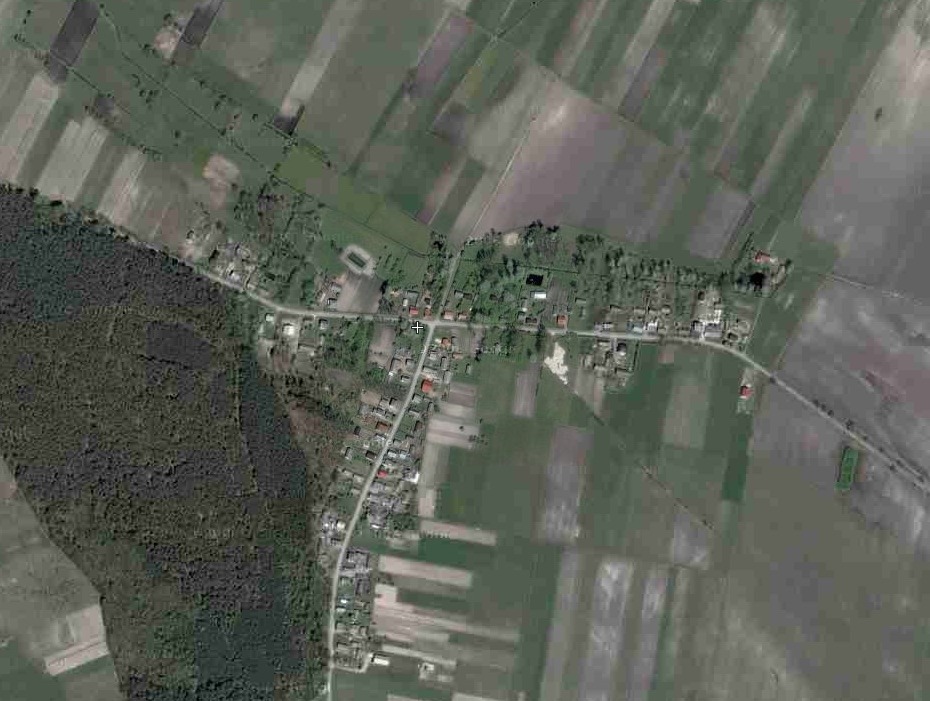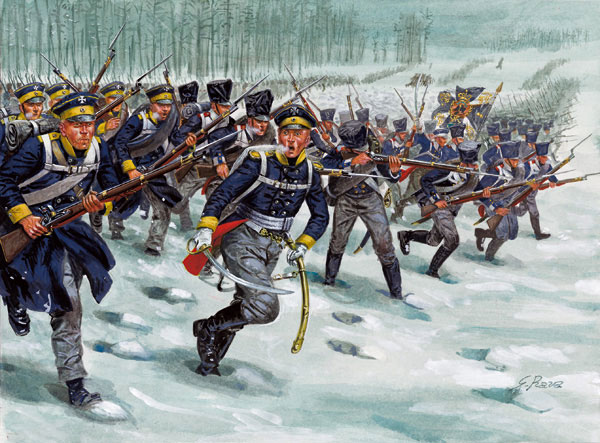
List of public offices and important people living in Züllichau around (1751)
Albrecht;Johann Georg;Züllichau;bei Gericht (Gericht is a court official?);1751 Albrecht;Johann George;Züllichau;Uhrmacher (Uhrmacher is a watchmaker);1751 Albrecht;Johann Martin;Züllichau;Gürtler (Belt maker or Leather worker);1751
Baptisms from the Züllichau weekly news (1830)
April 1838 Albrecht, Marie Elisabeth; get. Pfarrk. April 1838/Vater: Gärtner Albrecht; Tschicherzig; Züllichau-Schwiebus, 1838;
Table of craftsmen and merchants from the district Züllichau of the year 1866
Albrecht, R.; Kürschner (Furrier); Schwiebus; Züllichau-Schwiebus; 1866
Over the years I have collected
information on he village of Glogsen, in the Kries Zullichau Schweibus, Neumark,
Brandenburg, Prussia (now called Glogusz, Zielona Góra County, Poland), the
place were my ancestors emigrated from in an attempt to find out more about the
lives of these people. I have collected various information on the area from the
1700's to the early 20th century, this I have set out below to aid anyone
interested in the area where many of the origin of the early German settlers of
South Australia and Victoria.
Glogsen in the mid 1880's was a little village with a population of approximately 150 people about 9 Km west of Züllichau, to the North West of Glogsen the village of Palzig had open farm land and to the south east there was the village of Kay with a Post office, mill and church and a population of approx. 400 people. But Züllichau was the main town of the area with its population being maybe about 2000 people at the time. Recorded some years later in 1875 shows the population growing to 7378.
_______________________________________________________________________________________________________________

View of Glogsen taken in 1920's
What follows are extracts from different publications printed in the 19 and early 20th century with descriptions of the village, the people and their activities. These document I have translated, however some German words used in these publications have gone out of use or there meanings have changed over the years so exact meanings of some phrases are hard to decipher.
1809

Glogsen
village with Common-
2 Bauern- Farmer (probably owned land?),
10 Kossaten - Cottager who had a small kitchen garden, which served as part-time
farming. Most also had other employment eg shepherd, labourer or farmhand, May
have owned plot?
10 Budner- Was a person, usually a man, who leased a small plot of land with a
cottage on it. The land was usually worked like a family vegetable plot and may
have had a pen for a pig or a couple of sheep. Most land was owned by large
landowners and small plots or farms rarely came up for sale. Land tended to be
passed on within the families.
1 Einlieger - Agricultural odd-job worker, who usually rents living space from a
farmer. /male free agricultural labourer.
Schmiebe-Blacksmith
Muhle-Mill
202 Morgen Holz- 51 Hectares of Forest
31 Feuerstellen-fire places (houses?)
169 Menschen - People
14 Hufen- (People with a small plot of land)
The country of R Von Gersdorf –
Kirchi. Berfassung - Eing. To Kay Isp. Zullichau



Glogsen
Village with 1 windmill,
24 houses,
154 residence?
1 manor widow Zippel lives at this place
Court jurisdictions lower Glogsen, upper Frankfurt un Oder
nearest Evangelist church at Kay
Military area, Landwehr 12th Regiment, 1st Battalion
Post Office area Zullichau
land in Neumark
Directory
for
the cities
Zullichau – Schwiebus
1901

Glogsen
Post Office Kay
From Zullichau 8.8 km
From Schwiebus 19.2 km
Office chiefs in Nieder.Guhren
Registrars of births, marriages and deaths in Lodjow.
Property district, 89 inhabitants.
Property chief Estate manager, Kubisch,
Office chief
Property chief. Deputy. Nieder. Guhren.
Community, 141 inhabitants.
Municipality chief residents
Juror: Lehmann, Klenke
Deputies. Schüffe Wolff
Rau, tapmeister (publican)
Thiele, building contractor
Local
history and geography
Of Kreises
Zullichau-Schwiebus
Fifth edition
1925

Glogsen, of glog= Whitethorn. 260 inhabitants. With a size of approximately 500 hectares, comprising 300 hectares of cultivated fields, 100 hectares of meadow and 100 hectares of forest. Glogsen belonged 1565 to Hans Kalckreuther, but it had past to Löbens by 1583. They controlled it until around 1750, then von Thümen and then around 1800 the Landrat (or local member of parliment) became Von Gersdorf, whose family had for 300 years possessed Palzig. Later his second son Lieutenant von Gersdorf inherited the position of Landrat. Lieutenant von Gersdorf sold the land which contained Glogesen in1836 and it was purchased by a Mr Zippel. On his death his widow, whose maiden name was Wittwer, became the owner. some decades the widow Zippel rented the property to a Mr Kubisch.
![]()
List of the
refugees from the Glogsen
These people were either expelled or fled from the Russian army as it advanced
to Berlin towards the end of WW II
Berger, Kathe & Rudolf, Nr.8
Donath, Emil & Alma geb. Neumann
Dorr, Anni
Engler, Hans
Eysoldt, Waltraud geb. Muller
Fischer, Siegfried
Franzel, Hildegard geb. Felsch
Fuchs, Kurt
Gaedke, Irmgard geb. Kaczmarek
Gotthard, Lina
Gotz, Phillipp, Julienhoff
Grams, Adolph, Nr. 8
Gunther, Gerhard
Jahnke, Erhard
Jahnke, Richard, Nr. 6
Jakobi, Erwin
Jakobi, Heinz
Kaczmarek, Erwin
Kaczmarek, Frieda
Kaczmarek, Martha
Knobel, Erika geb. Bien
Kubisch, Elfriede & Richard, Nr. 25
Lange, Hildegard geb. Nogatz, Nr. 25
Mutz, Gerda geb. Jakobi
Muller, Karl & Margarethe geb. Pohl, Dorfstr. Nr. 31
Paech, Gerda geb. Scheffler, Nr.3
Reschke, Elsbeth geb. Sohr
Rosch, Helene geb. Scholl, Nr. 6
Rudolph, Erika geb. Stein
Sohr, Reinhard, Nr. 36
Scheffler, Olga, Nr. 3
Schmidt, Gerda
Schmuck, Alfred
Scholl, Albert sen. u.Sohn Albert, Nr. 11
Scholl, Johanna, Nr. 11
Scholl, Marie geb. Scholl, Nr. 6
Schulz, Kurt, Nr. 3
Schulze, Gertraud geb. Jahnke
Stein, Erika, Repassiererin
Tumena (Temena), Hildegard geb. Jahnke
Vetter, Luise, Julienhof
Vetter, Johanna geb. Schmidt. Julienhoff
Wehrbein, Anneliese geb. Kaczmarek
Wendland, Hildegard geb. Zippel
Wolff, Helmut, Nr. 22
Wurdel, Barbara
Zwarg,Emma geb. Thiele
![]()

village lane before 1945

Glogusz today
![]()
Life for the majority of people living in the Zullichau-Schweibus area in the early to mid 1800's was based around the land, with only a few small factories producing cloth or other items in the bigger towns. Most land, as in the rest of Europe at the time was owned by the nobility, villagers were set up on these estates for the workers who in some cases either owned or leased a house with a plot of ground which they grew vegetables and may have kept pigs or a cow which produced food for the family, in the documents of the time these people went by various names Hufner, Gartiner, or Cottager the difference seems to be in the size of the blocks they had, a Hufe at that time was an area of land which in this part of the country seemed to be about 30 hectares, Gartiners and Cottager seemed to have smaller plots of land. These blocks however were usually not enough to keep the family so outside work was undertaken, most commonly for the local estate owner on his farm. Unlike Britain and France the Estate owners usually lived on these properties and would take an active part in running the estate many were well liked by there workers, there is a letter written back to some of these estate owner from the former worker who had emigrated and settled in Australia which showed that the landowner in question was much respected and liked by his old employee.
Children born into these families would be baptised a few days after birth. At baptism at the time, it was common to give the child two or more given names, the first given name was a spiritual or saint's name. The second given name was the secular name, which is the name the person was known by, both within the family and to the rest of the world. The spiritual name usually to honour a favourite saint was often used repeatedly for ever child of the same gender for example Johann Gottfried may have had a brother Johann Heinrich for example. For more on German naming customs. Religion was to play an important part in most of these peoples lives the clergy were highly regards members of these community and were better educated so were sort out for advice on al sorts of matters by members of their congregation.
Once a child got to the age of 5 or so, they had to play their part in supporting the family by helping their parents on the small plots every body had to do their part in order that the family had enough for the basic necessities of life. Starvation was still a major problem for the poorer residents of many of these places. Sometimes children as young as 7 or 8 were sent to work for other people in the area, working for their food and maybe as little as a bag of potatoes for their years labour. This was the only choice their parents had if they were to keep all of their family fed.
A system of education had been introduced by the government in the 1770's and some time later it was made compulsory for children to attend school. How long they attended school, or indeed if every child did get some basic education I am not sure. As the children grew in to their teens they would go out working either on the Estates or be apprenticed to craftsmen to learn a trade. As well as an obligation to help support their families, their was also an obligation to the king and motherland the young men had to play their part in the defence of their country.

Prussian infantry of the period
(Yellow cuffs and collar denotes Neumark Regiment)
In the early 1800's the German Army had four classifications of military service; Active, Reserve, Landwehr and Landsturm. At the age of 17, a man might be called up to serve in the Landsturm, a sort of National Guard for home defense. In peacetime, it was mandatory to serve in the Army upon a man's 20th birthday. A two year period of active service then began, or 3 years in the cavalry and field artillery. After that time, a man would be liable to serve the next 4 to 5 years in the Reserve, usually a 2 week training period each year. Serving in the Reserve during peace time, was generally regarded as a vacation from home and work. After the Reserve period, a man was then liable to serve in the Landwehr for the next 11 years. The last stage was being liable for service for 7 years in the Landsturm 2nd Ban. After the age of 45, a man was then free from further military service. It was only in times of war that the Landwehr and Landsturm were expected to be called for duty. Men it seemed were not encouraged to marry until they completed their active service and the records show that men were generally married from their mid twenties onwards.